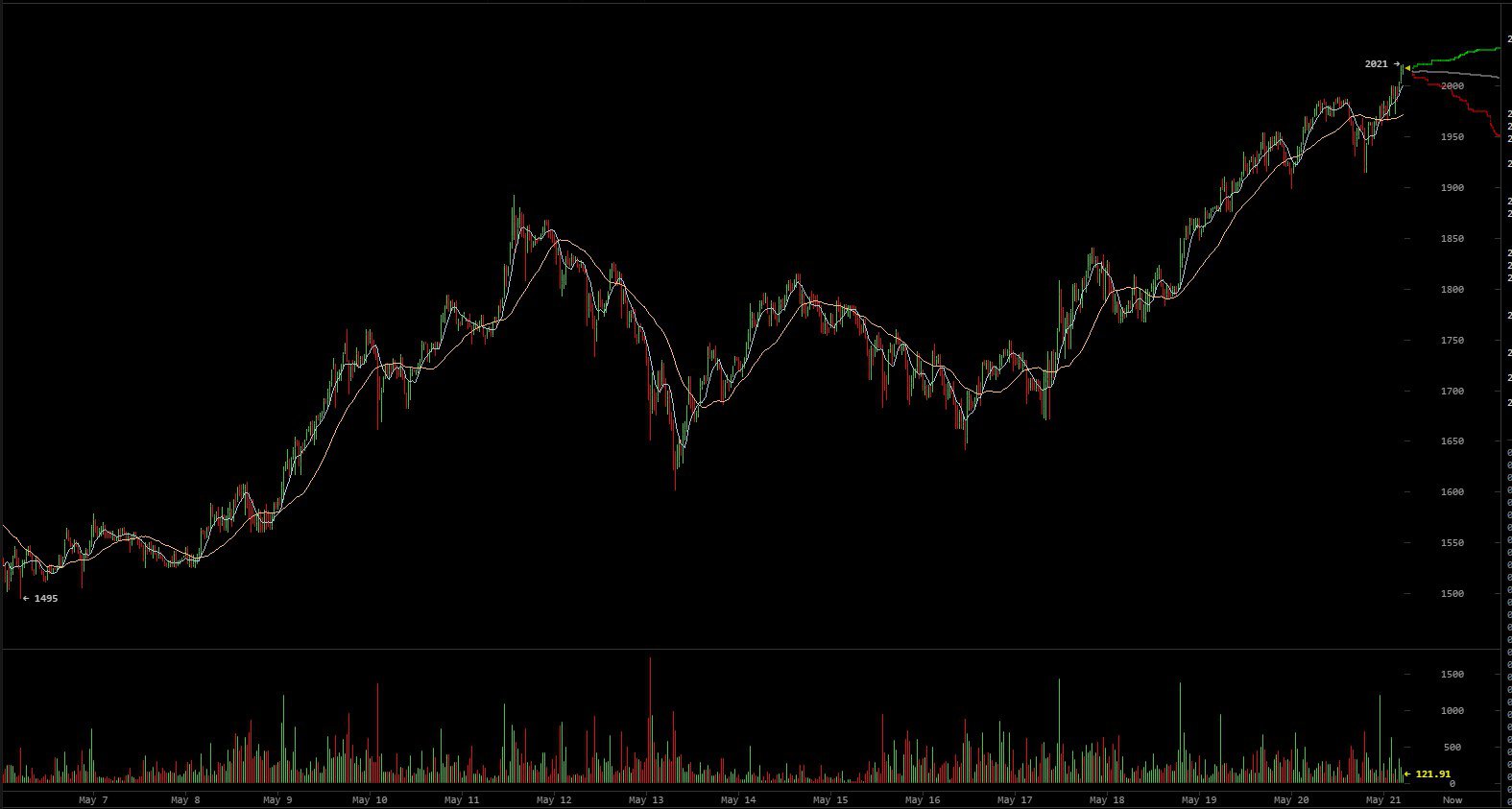Bitcoin Price Breached $2,000, Pundits Coin-Flip What Comes Next

Bitcoin price finally breached the much anticipated $2,000 line,
sending excitement throughout the burgeoning global cryptocurrency community. As early as five a.m. GMT+2 on Saturday, CoinMarketCap listed the pacesetter of digital currency for $2014 with almost $34 mln Market Cap. The $2,000 lane has been expected for some time now but it intensified three days ago when Satoshi Nakamoto's brainchild stabilized at the $1,800 range. On Friday it made it to the $1,900s further increasing the $2,000 price obsession. As much as it is good news for the whole community, what does this mean for all of us? What is in it for the ecosystem? Experts and community members differ on what’s ahead.
Lingham: not healthy
Bitcoin Price Pundit Vinny Lingham is not excited about the current price trend and sees it as very deleterious for space. "Not healthy in my opinion, but clearly everyone else knows best," he noted. "I'll just wait and see."
Malcolm Macleod: problems remain
More so, Gulden Wallet Developer, Malcolm Macleod's concern is that the price has been pushed too high, without the fundamentals to back it up and ultimately it is damaging to the ecosystem. He cites particularly the ongoing transaction queue problems. "These things are always a mixed bag, so probably some good and some bad things come from it," Malcolm stated.
More flow from fiat
But Alexandro Colorado of Bitcoin Mexico believes otherwise. For him, even though Bitcoin certainly has the availability issue but the rally has merits. "It makes sense as there is more money coming into the system," Alexandro explained to Cointelegraph. The Chief Cat Herder of Cryptopulco, the annual cryptocurrency conference in Acapulco, Mexico, Nathan T. Freeman had this to say:
"BTC increases in value relative to USD because people are willing to give up more fiat currency in exchange for Bitcoin. If you try to explain why they are willing, you are projecting a motive for their subjective value, and you're most likely full of shit. Even if the motive you ascribe is correct, you can't prove it. It's just an unfalsifiable claim in a sea of individual choices. It's all good."
Bitcoin Bubble to burst in 2019?
Though the network is growing impressively, hitting pass $2,000 seems like an impending doom for some experts. Whilst others point to some nagging fundamentals, many are optimistic it will keep growing without any blemish.
Alexandro Colorado says:
"A bubble is some sort of manipulation but actual growth is another thing. Companies grow billions in months, why crypto shouldn't? The Mexico-based Bitcoin enthusiast pointed out that a lot of the world still don't know or trust crypto but it doesn't mean we are heading into a bubble.”
When Cointelegraph asked Vinny Lingham if there is an impending bubble,
this was his answer:
"Yes, but people who called the bubble in 2011 were wrong. It took two years to burst."
Coin-flipper
Malcolm MacLeod is unsure if there is going to be a burst, but it is unclear to him what fundamentals if there are any behind the latest price growth. "I think there is a high chance that it is a bubble of some kind but I hope to be wrong," he indicated. Absorbingly, this is Nathan T. Freeman's take on whether it is a bubble and
Will it burst soon:
“There's only one major event in Bitcoin itself that could shape the future, and that's the outcome of the block size debate. All other factors are outside the purview of Bitcoin itself and therefore could shape out. Anyway, you're talking about predicting the simultaneous global effect of huge political shifts.”
"Predicting a bubble is a dice roll, and anyone who claims to know those outcomes is a coin-flipper," he added.
Chuck Reynolds
Contributor
Please click either Link to Learn more about TCC-Bitcoin.
Alan Zibluk – Markethive Founding Member





